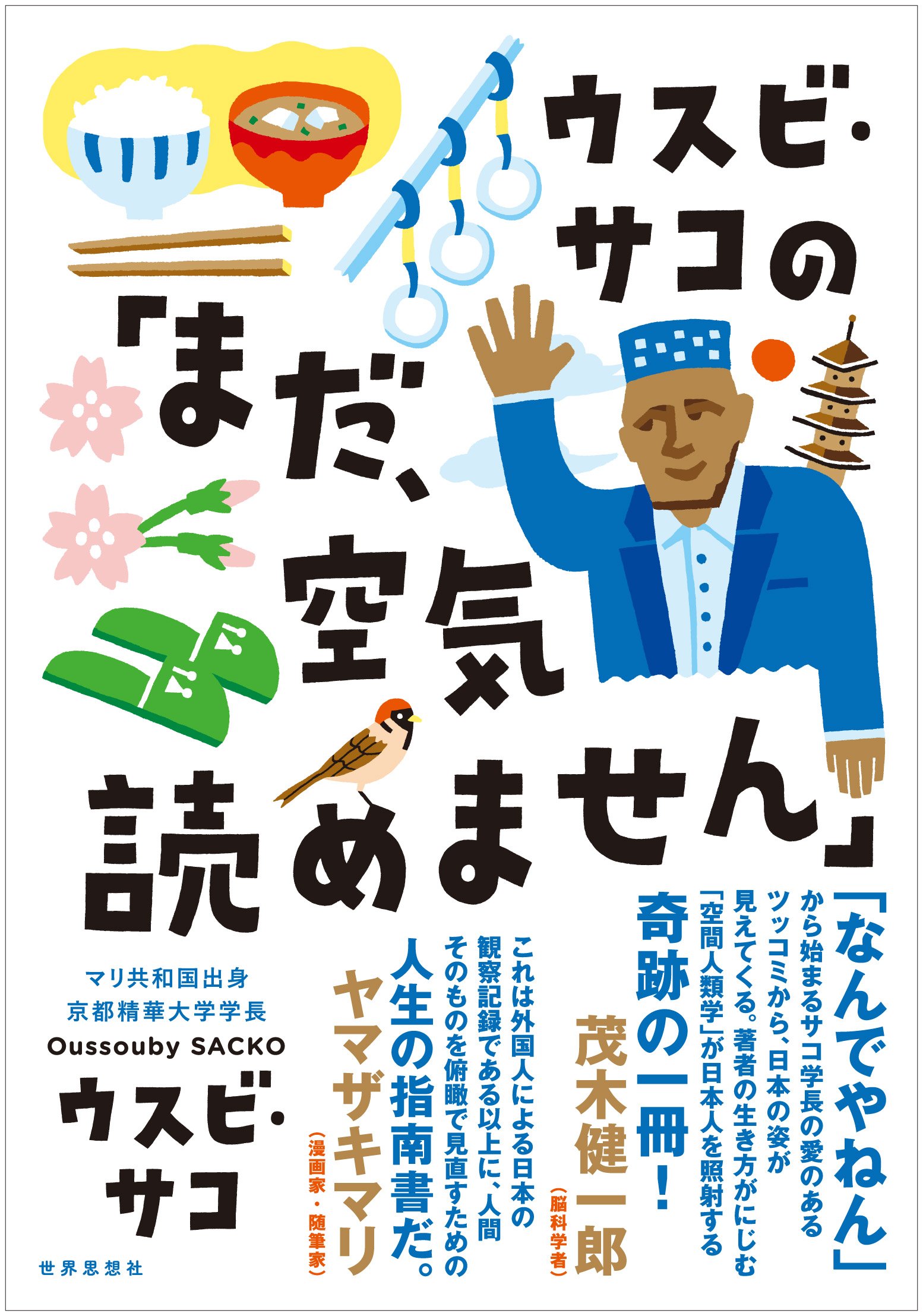- イベント
I Still Can’t “Read the Air”

I Still Can’t “Read the Air”
Oussouby Sacko
186 mm x 130 mm
190 pages
JPY 1,500
ISBN 9784790717621
Pub date: October 2021
Through humorous essays, the author—who was born in the Republic of Mali and lives in Kyoto—describes failures, discoveries, and hopes he has encountered during his thirty years of life in Japan. “Starting with his discussion of the loving Japanese retort ‘Nan-de ya nen,’ the reader comes to see the true form of Japan. A miraculous book that illuminates the Japanese people!” –Kenichirō Mogi, neuroscientist
Reviews
“This is more than a record of a foreigner’s observations of Japan; it is an instruction manual for life, a bird’s-eye view of humanity itself.” ―Mari Yamazaki, Manga artist and essayist
“This book is more than just a ‘theory of Japan from a foreigner’s point of view’ because it offers a glimpse of the author’s determination to live as a ‘Marian Japanese,’ refusing to be treated as a ‘customer’ and acquiring Japanese citizenship.” ―Kyodo News
Table of Contents
Preface: “You’re cheerful and lively” means “You’re noisy and annoying”
Introduction: Unable to “read the air” …in a country of codes
Chapter 1: Secularity …but every meal starts with a prayer
Chapter 2: Homes …with too many slippers
Chapter 3: Hospitality …where the guest becomes exhausted
Chapter 4: Cherry-blossom viewing …where it’s too dark to see the cherry blossoms
Chapter 5: Manners …but pretending you don’t notice when they apply
Chapter 6: Tourist attractions …in places full of contradictions
Chapter 7: Being a foreigner …doesn’t necessarily mean you celebrate Halloween
Chapter 8: The Japanese …start totalitarianism at breakfast
Chapter 9: “Reading the air” …is wisdom for coexistence
Conclusion: The philosophy of Nan-de ya nen
Keywords
Japanese culture, Mali, symbiosis, diversity, homestay, discrimination, child rearing
Media Coverage
Kyodo News, Asahi Weekly, Monthly Kyoto, Da Vinci
Author Information
Professor and President of Kyoto Seika University. Born in 1966 in the Republic of Mali. After graduating from high school, he studied in China as a government-sponsored student, and came to Japan in 1991. Ph.D. in architecture from the Graduate School of Engineering, Kyoto University, and became a Japanese citizen in 2002. Obtained Japanese citizenship in 2002. Specialized in spatial anthropology. His research interests include the relationship between people, society, and architectural space, including “Habitation Spaces of the World,” and “Revitalization of Kyoto’s Machiya Townhouses”. He is multilingual, fluent in Bambara, Malinke, Soninke, English, French, Chinese, and Kansai dialect.
カテゴリ別お知らせ
- PR
- 重版
- 正誤
- NEWS
- NEWS
- NEWS




